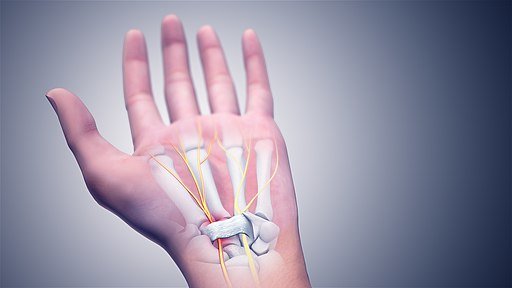Navigating Carpal Tunnel Syndrome While Pursuing a Passion for Watercolour Painting
As I embark on my watercolour journey, I find myself facing an unexpected challenge: a diagnosis of carpal tunnel syndrome. Though it is not what I wanted to be blessed with, I cannot help but feel grateful that it is not the onset of arthritis, as I was suspecting. Still, it’s not the news I was hoping for as I continue to explore the beauty and artistry of watercolour painting.
My hands have been feeling off for some time now, and as someone whose circulation has never been the best, I initially brushed off any minor issues in this area. However, this summer, after a particularly lengthy and monotonous painting session, I began to experience shooting pain in the back of my right hand. It was clear to me that this discomfort was a result of the repetitive motion of holding the brush and making small, precise strokes, as the pain was most intense when my hand was in the position of grasping the brush.
Being so enthusiastic about watercolours, it was difficult for me to take a break from painting, but the pain in my hand left me with no other choice. It took about a week for the discomfort to subside, but when I returned to my art, sadly the pain followed, though not as intensely.
Despite this, I continued to create for a few more weeks, hoping that the situation would improve on its own. Unfortunately, this did not happen, and I eventually made the decision to seek the help of a physical therapist. It is always hard to confront physical limitations, but as an artist, I know how important it is to prioritise self-care in order to continue doing the work that brings us joy.
It didn’t take long for the physiotherapist to diagnose me with carpal tunnel syndrome. During the appointment, I was asked a number of questions about my symptoms and when and where I was experiencing the most discomfort. The physiotherapist also conducted an examination of my hands, including tests like pressing my hands together for a few seconds to check for tingling sensations.
I was genuinely surprised to learn that my diagnosis was for carpal tunnel syndrome, as I had always associated this condition with wrist pain and not necessarily other areas of the hand.
Nevertheless, I am grateful to have received an answer and to have a clear understanding of what is causing my symptoms. I am now more confident that I will be able to come up with an effective treatment plan and find relief.
What exactly is carpal tunnel syndrome
The physician explained that carpal tunnel syndrome is caused by pressure on the nerve that runs through the wrist and into the hand. This nerve is called the median nerve, and it provides feeling to the thumb, index finger, middle finger, and part of the ring finger.
The carpal tunnel is a small space in the wrist that the median nerve and other tendons pass through. When the tendons or the median nerve becomes swollen or inflamed, it can cause pressure in the carpal tunnel. This pressure can cause tingling, numbness, and pain in the hand and wrist.
Here’s an image I found to demonstrate it:


It is often caused by repetitive movements, such as typing, using a mouse for long periods of time, or indeed gripping actions.
The physio advised initially to wear a splint at night to keep the wrist in a straight position.
Other treatment options he suggested were taking breaks from activities that cause symptoms, and doing exercises to stretch and strengthen the wrist and hand muscles.
I also heard that in severe cases some people receive surgery to alleviate their symptoms and pain. Let’s hope my condition won’t call for such a solution!
Taking measures to heal
I have been wondering if my efforts to heal my injury have been making a difference. I purchased a splint and have been using it regularly, but I’m not sure if it has been helping much.
In an attempt to speed up my recovery, I have also started doing some exercises that I found on YouTube and have been making an effort to use my non-dominant hand more to give my right hand a break. Despite all of these efforts, I am unsure if I am making much progress.
Although it is still early days, I will carry on using the splint and doing the exercises for the time being.
In the meantime, I have to keep reminding myself that it’s totally normal to feel frustrated when physical challenges get in the way of our art, but it’s important to remember that taking care of ourselves is just as important as making art. By prioritising our health and well-being, we can continue to create and find joy and fulfilment in our art.

